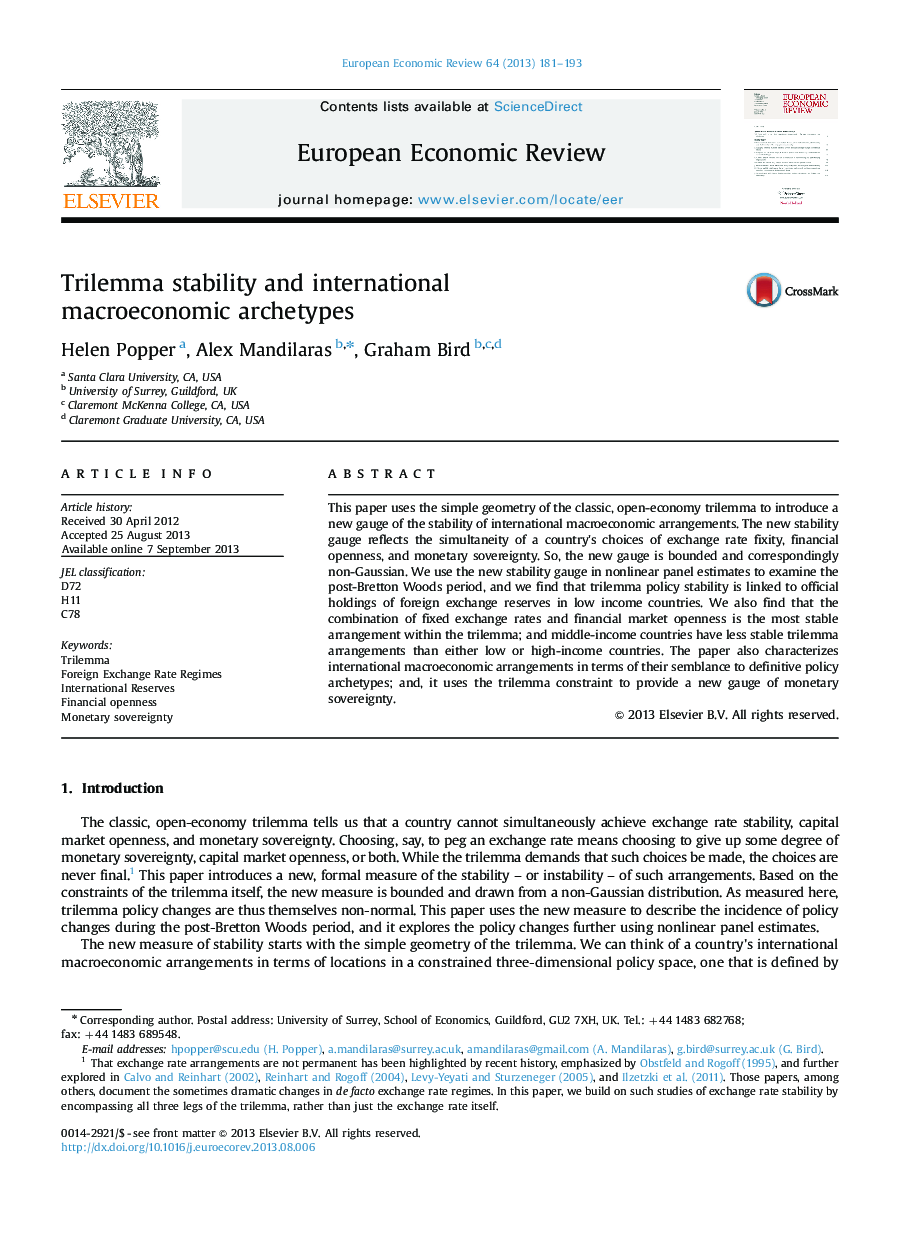| Article ID | Journal | Published Year | Pages | File Type |
|---|---|---|---|---|
| 5066923 | European Economic Review | 2013 | 13 Pages |
â¢We offer a new measure of the stability of international macroeconomic arrangements.â¢The trilemma constraint is used to provide a new gauge of monetary sovereignty.â¢The combination of fixed exchange rates and financial market openness is the most stable arrangement.â¢Middle-income countries have less stable trilemma arrangements.â¢In low-income countries foreign exchange reserves correspond to greater stability.
This paper uses the simple geometry of the classic, open-economy trilemma to introduce a new gauge of the stability of international macroeconomic arrangements. The new stability gauge reflects the simultaneity of a country's choices of exchange rate fixity, financial openness, and monetary sovereignty. So, the new gauge is bounded and correspondingly non-Gaussian. We use the new stability gauge in nonlinear panel estimates to examine the post-Bretton Woods period, and we find that trilemma policy stability is linked to official holdings of foreign exchange reserves in low income countries. We also find that the combination of fixed exchange rates and financial market openness is the most stable arrangement within the trilemma; and middle-income countries have less stable trilemma arrangements than either low or high-income countries. The paper also characterizes international macroeconomic arrangements in terms of their semblance to definitive policy archetypes; and, it uses the trilemma constraint to provide a new gauge of monetary sovereignty.
